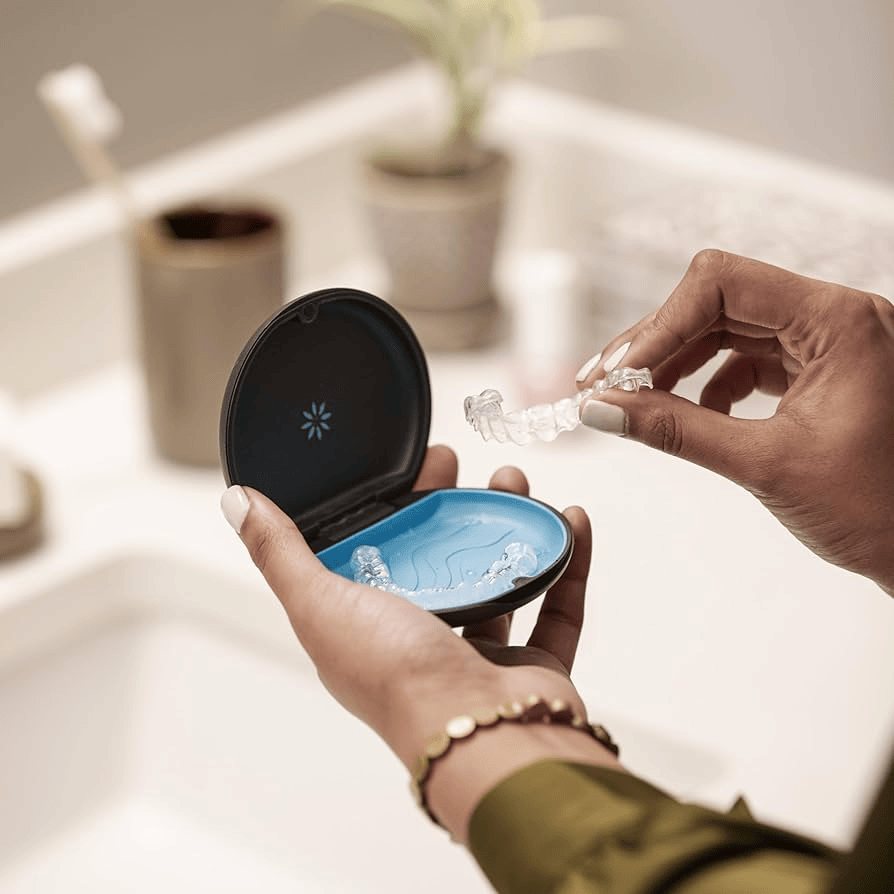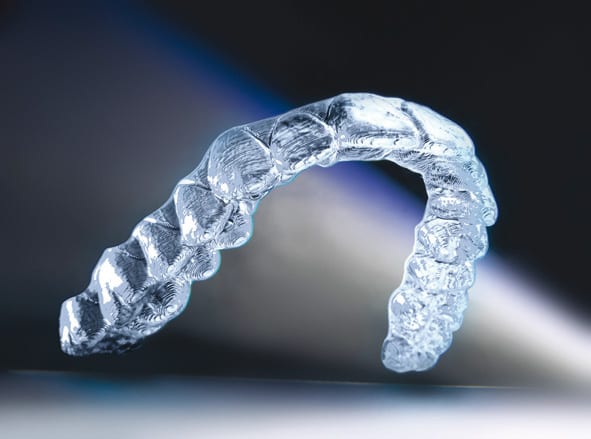After completing orthodontic treatment, the journey to a perfect smile doesn't end. Wearing a retainer is a critical step in maintaining the new alignment of your teeth achieved through braces or clear aligners. Despite this, many individuals encounter the unexpected and frustrating issue of their retainer no longer fitting properly. In this comprehensive guide, we'll delve into the reasons behind this common problem and explore practical solutions to rectify it.
Table of contents
Understanding Retainer Fit Issues
Retainers are meticulously crafted to fit each individual's mouth, ensuring that they keep your teeth in their new, corrected positions after orthodontic treatment. However, over time, a number of subtle or significant factors can cause the retainer to feel tight, create discomfort, or stop fitting altogether. This can be alarming for patients who believe they’ve completed their treatment phase—only to find their progress at risk. Understanding how and why these changes happen is the first step in protecting your orthodontic investment.
Common Causes of Retainer Fit Issues
Retainer fit issues can stem from a variety of factors, each of which can impact the effectiveness of your retainer. These include changes in your oral anatomy, improper retainer care, skipped wear sessions, and natural biological processes like aging. Each factor can compromise the retainer’s original shape or your teeth’s alignment, making it difficult—or even impossible—for the appliance to fit as it did post-treatment.
Shifted Teeth
One of the most prevalent reasons for a poorly fitting retainer is that your teeth have shifted. This can occur if you haven't been diligent about wearing your retainer as instructed by your orthodontist. Even minor lapses can lead to noticeable changes. Shifts can happen gradually and may not be obvious until the retainer starts to feel snug or fails to seat fully. Teeth naturally tend to return to their original position—a process called relapse—particularly during the months immediately following treatment. The more time that passes without regular retainer use, the more pronounced the shift becomes.
The Importance of Consistency: Wearing your retainer consistently is crucial to prevent any movement. Even missing a few nights can allow teeth to shift back toward their original positions.
The Role of Pressure: Retainers apply gentle pressure to keep teeth in place. When this pressure isn't applied regularly, teeth can start moving again.
Long-term Consequences: Over time, even slight movements can make a retainer feel tight and uncomfortable, signaling the need for adjustment or replacement.
Misshapen Retainers
Another common cause of fit issues is a retainer losing its shape due to improper handling or storage. For instance, clear plastic retainers are particularly vulnerable to changes in shape. Exposure to high temperatures can soften the plastic and cause warping. Improper cleaning methods—like using hot water or abrasive substances—can also degrade the integrity of the material. Retainers left outside of their protective case can get crushed, bent, or cracked, resulting in a compromised fit that no longer supports your alignment goals.
Exposure to Heat: Heat can warp plastic retainers, causing them to fit improperly. Avoid leaving them in hot environments, like a car on a sunny day.
Physical Damage: Dropping or mishandling a retainer can lead to cracks or bends, compromising its fit and function.
Material Fatigue: Over time, the materials used in retainers can degrade, particularly if they are not cleaned or stored correctly.
Inconsistent Usage
Failing to wear your retainer regularly can lead to significant fit issues, as teeth begin to move back to their original positions. Retainers are not just a temporary solution; they are a long-term commitment to maintaining the outcome of months—or years—of orthodontic work. Many patients mistakenly believe that skipping a night or two won’t have a lasting impact. However, teeth can shift more quickly than expected, especially in the first year post-treatment. When this happens repeatedly, the retainer eventually won’t be able to seat properly, signaling a relapse that could require further intervention.
Habits and Routines: Developing a routine for wearing your retainer can prevent lapses in usage. Consider setting reminders or incorporating it into your nightly routine.
Understanding Retainer Schedules: Different types of retainers require different wearing schedules. Always follow your orthodontist's advice to maintain fit.
Consequences of Neglect: Inconsistent usage can lead to more than just fit issues; it can undo much of the progress made during your orthodontic treatment.
Natural Changes
As we age, our bodies undergo natural changes, and our teeth are no exception. This can affect how your retainer fits over time. Bone density may decrease, the jaw may subtly shift, and gum tissue can recede—each of which can contribute to changes in tooth position or spacing. Hormonal fluctuations, particularly during life stages such as puberty, pregnancy, or menopause, can also affect the connective tissues supporting the teeth. These changes may be slow, but over the years they can accumulate enough to make a previously well-fitting retainer feel awkward or tight.
Aging and Dental Health: As we get older, our teeth and gums may undergo subtle shifts due to factors like bone density changes and gum recession.
Hormonal Influences: Hormonal changes, particularly during puberty or menopause, can affect dental health and lead to changes in the fit of a retainer.
Adapting to Changes: Regular dental check-ups can help monitor these changes and allow for timely adjustments to your retainer.

How to Fix a Poorly Fitting Retainer
If your retainer no longer fits properly, don’t panic. While frustrating, this issue is surprisingly common and typically fixable. Addressing it early can prevent further misalignment and protect your investment in orthodontic care. Depending on the cause—whether it's due to dental shifting, damage, or age-related changes—your next step could be a quick adjustment or a replacement retainer entirely. A poor fit doesn’t necessarily mean a total relapse, but it does require action to avoid compounding the problem.
Consult Your Orthodontist
The first and most crucial step when dealing with a poorly fitting retainer is to consult your orthodontist. A professional assessment ensures you're not making the problem worse by continuing to wear an ill-fitting device. Your provider can identify whether the misfit is due to shifting teeth, damage, or a need for realignment. They’ll also be able to recommend whether an adjustment is sufficient or if a new retainer is necessary. Orthodontists use digital scans or impressions to determine the exact state of your alignment, offering data-driven solutions rather than guesswork.
Retainer Adjustment
In many cases, particularly with wire-based retainers like the Hawley model, a quick adjustment can restore the fit and function. This is often done in-office and may take only a few minutes. Adjustments may involve bending the wire slightly or refining the acrylic plate so it conforms better to your teeth.

Minor Tweaks: Orthodontists can manipulate the wire to better contour to your current bite, making the retainer more comfortable without needing a replacement.
Professional Expertise: DIY fixes are strongly discouraged—bending wires or trimming plastic can cause irreparable damage.
Quick and Effective: Most minor adjustments are same-day fixes, making this a convenient first option if the structure of your retainer is still intact.
Retainer Replacement
If your retainer has been warped, cracked, or misshapen due to heat exposure, biting, or natural wear and tear, a replacement is likely your best option. The lifespan of a retainer varies depending on the material, but clear plastic models often require replacement every 1 to 2 years.

Signs You Need a Replacement: These include visible damage, persistent discomfort, or a fit that remains poor even after adjustments.
Customized Fit: A new retainer will be fabricated based on an updated scan or impression of your teeth, ensuring accurate pressure and support.
Investment in Your Smile: Though replacements can be costly, they are essential in preventing relapse and safeguarding your orthodontic results long term.
Teeth Realignment
For patients who stopped wearing their retainers altogether or who’ve experienced significant shifting, re-treatment may be necessary. This doesn’t always mean going back to full braces—it could be a short round of invisible aligners. Even subtle shifts can change the fit of your retainer significantly, and realignment can quickly correct these.

Assessing the Situation: Your orthodontist will measure the extent of relapse using photos, impressions, or a digital scan.
Short-term Solutions: Mild cases may only require a few weeks of realignment with clear aligners before fitting a new retainer.
Long-term Stability: Proactively addressing relapse with professional care ensures the shift doesn’t worsen, avoiding the need for a more involved treatment plan.
Retainer Cleaning, Storage, and Heat Protection
Caring for your retainer isn’t just about hygiene—it’s critical to protecting your orthodontic results. Improper care can lead to warping, bacterial buildup, and ultimately a poor fit. Whether your retainer is permanent or removable, establishing a maintenance routine is key.
Daily Cleaning: Brush your retainer with a soft-bristled toothbrush and cool or lukewarm water. Avoid using hot water or abrasive toothpaste, which can damage plastic models.
Deep Cleaning: Soak removable retainers weekly in a retainer-specific solution to disinfect and remove odors. Avoid using mouthwash or harsh chemicals.
Safe Storage: Always place your removable retainer in a ventilated case when not in use. Leaving it out can expose it to bacteria or physical damage.
Avoiding Heat Exposure: Never store your retainer in a hot car, near radiators, or in direct sunlight. Heat can warp plastic retainers, making them unusable.
Travel Tips: Bring a travel-sized case and mini cleaning kit. If possible, carry a backup retainer to avoid disruptions in wear.
What to do if your Invisalign retainer doesn't fit?
If your Invisalign® retainer no longer fits, it likely means your teeth have shifted. Avoid forcing it—schedule a visit with your orthodontist. They may recommend taking new impressions or scans to create a fresh retainer that reflects your current alignment. Prompt intervention can prevent further movement and help you avoid restarting full treatment.
How to make Invisalign retainer fit again?
If your retainer is only mildly misshaped, soaking it in lukewarm—not hot—water for a few minutes may help slightly soften the plastic, allowing it to adjust back to your bite. However, this is only a short-term remedy and should be approached cautiously. Any attempt to reshape a retainer carries the risk of further distortion, so professional guidance is always the safer choice.
Are retainers tight after Invisalign?
Yes—especially if you’ve missed a few days of wear. A tight retainer often indicates that your teeth have begun shifting. If the pressure causes pain or the retainer won’t seat fully, discontinue use and contact your orthodontist. Continuing to wear an overly tight retainer can do more harm than good.
How to force a retainer to fit?
Forcing a retainer that doesn’t fit can damage your teeth, irritate your gums, and break the appliance. A poorly fitting retainer is a sign that your alignment may have changed. The safest route is to consult your orthodontist, who can determine if adjustments, refinements, or a replacement is needed.
Do Invisalign retainers get looser?
Yes, a slight loosening is expected as your teeth settle and the retainer material naturally wears down. However, if your retainer feels unusually loose or stops holding your teeth in position, it could signal that it’s time for a replacement. Routine check-ins with your orthodontist help ensure long-term retainer performance.
Conclusion
A poorly fitting retainer doesn’t mean your orthodontic journey is over—it simply signals it’s time to take the next step. Whether your retainer has warped, your teeth have shifted, or your routine has slipped, solutions are available to restore the fit and protect your smile. By recognizing the signs early and consulting your orthodontist, you can avoid unnecessary relapse and maintain the results of your aligner treatment. Pair that with daily care, proper storage, and awareness of heat exposure, and your retainer can continue doing its job—quietly and effectively—well into the future.






